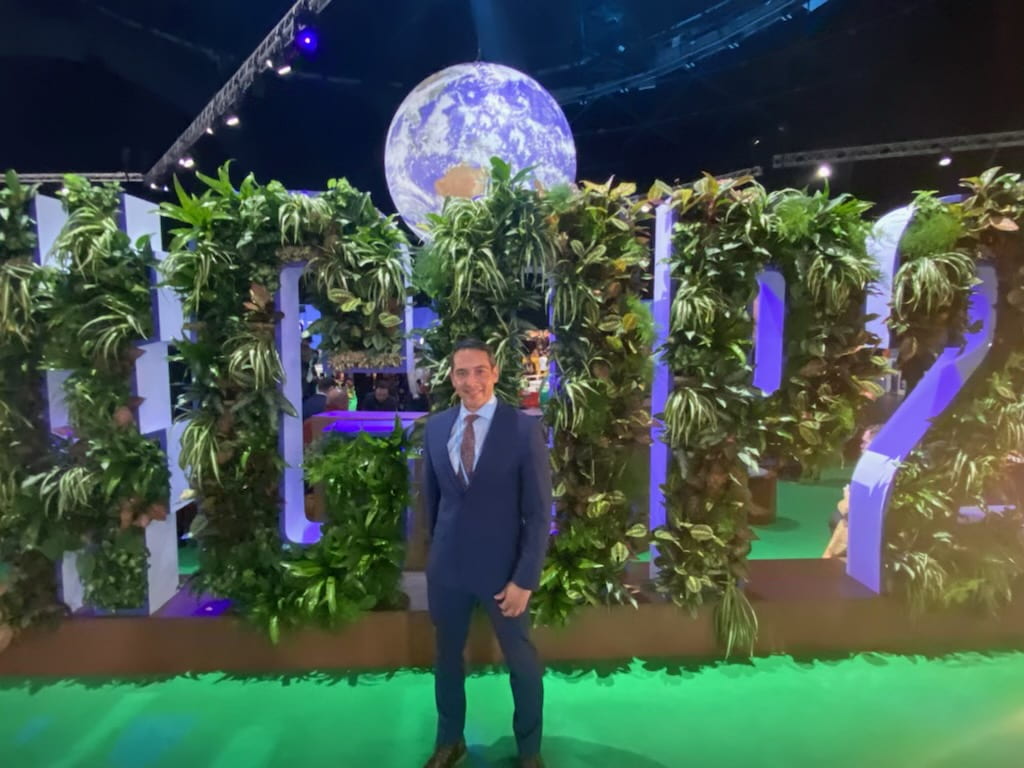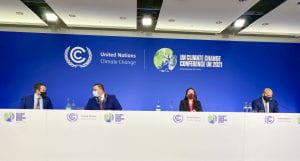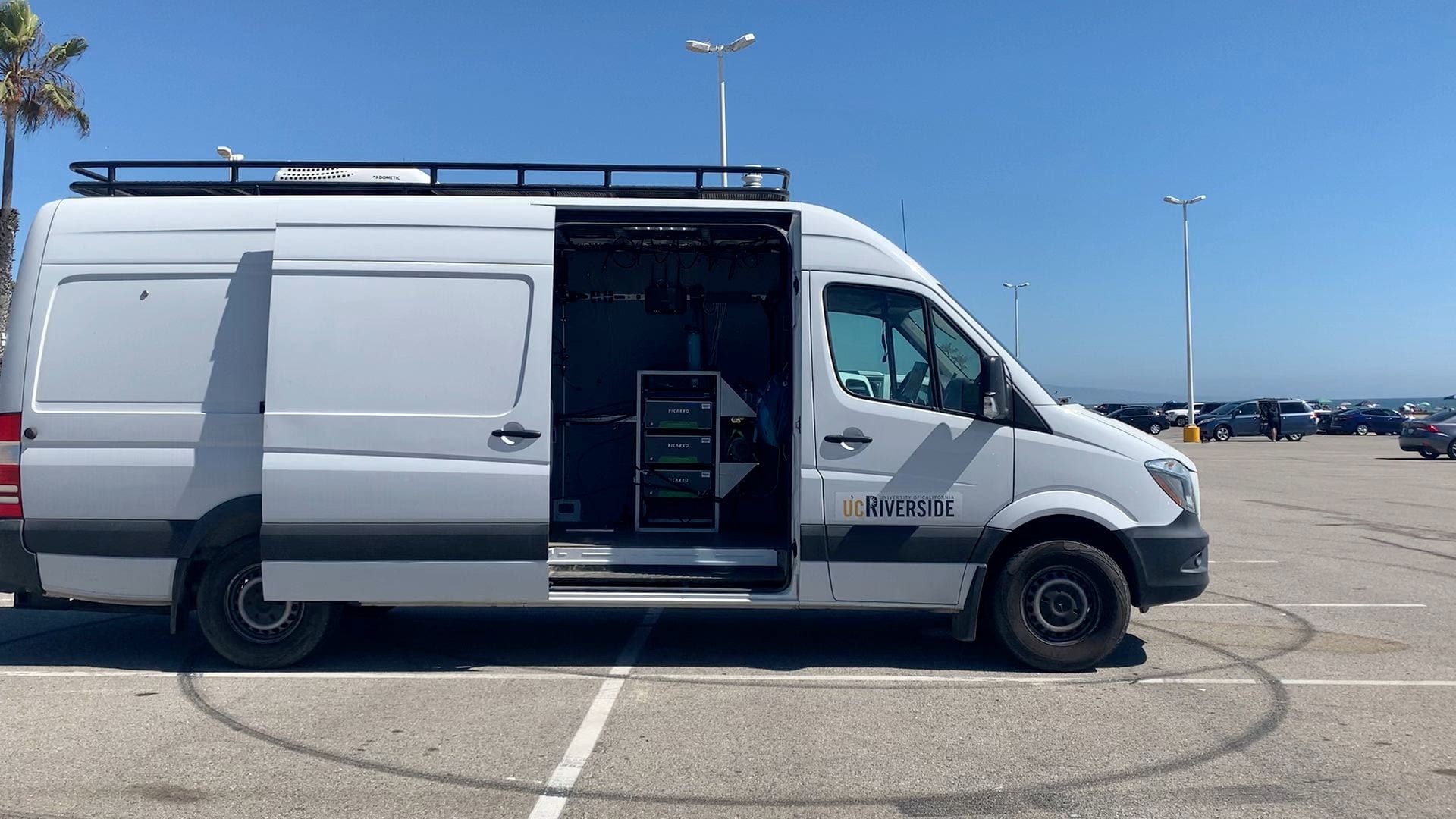Michael Méndez's COP26 adventure
The UCI professor reflects on his first trip to the UN Climate Change Conference

Michael Méndez, UCI assistant professor of urban planning & public policy, first started to dream of attending a United Nations Climate Change Conference during the three years he served as an inaugural James & Mary Pinchot Fellow in Sustainability Studies at the Yale School of the Environment.
The fellowship resulted in his award-winning book, Climate Change From the Streets: How Conflict and Collaboration Strengthen the Environmental Justice Movement (Yale University Press, 2020). Once that was published, Méndez felt it was “time to expand my scope to see how these policymaking bodies work firsthand on the global stage.”
His journey to the 2021 U.N. Climate Change Conference this fall in Glasgow, Scotland, featured its share of misadventures, including the last-minute cancellation of the lodgings he had secured in June. Fortunately, Méndez found new accommodations in Edinburgh, which he describes as a “beautiful, magical, fairytale-looking city.” He shares other memories of the 26th annual summit, known as COP, here.
What three words would you use to describe your experiences at COP26?
Exhilarating, confusing and opportunistic.
“Exhilarating” because it’s unlike any conference I’ve ever been to in my life. You see people from all walks of life, all levels of government and nongovernmental organizations, activists and everyday people, in one space, in one city, for two whole weeks – so that’s exhilarating.
“Confusing” because it was my first COP. If you’re not part of an elected or appointed official’s delegation, it can be quite confusing, because it’s essentially a black box. It’s a very high-level, elitist type of gathering, particularly in what they call the Blue Zone – which, as a UC professor, I had access to. A lot of things happen behind closed doors – the negotiations, the individual meetings that these policymakers and world leaders have – that we’re not privy to. So you’re often trying to figure out where you need to be, where to meet people and where the events are occurring, because it is quite chaotic.
And then, thirdly, “opportunistic.” Despite all that confusion, it’s a very thrilling experience because you get to meet a lot of different people and experts. It’s opportunistic because you can network and learn from other people that you normally would not have a chance to encounter.
You mentioned the Blue Zone. How is the conference organized?

There are two zones: the Blue Zone and the Green Zone. The Blue Zone is where all of the world leaders, policymakers, elected officials and some NGOs convene in a general space. It features the high-level, invitation-only meetings. The Blue Zone is like being in orchestra seats at a concert. The Green Zone is sort of like being in the bleachers, because the negotiations and major events are not happening there. It could’ve been a lot different before, because COVID-19 safety protocols really changed a lot of the dynamics, from what I understand.
There are multiple rooms where negotiations take place. Due to COVID protocols, participants had to arrive early and secure tickets to observe. The tickets often ran out. You could watch online, so sometimes I had to watch from the hallways, but you do get to see them discussing the topics. It’s very similar to the public hearing process at the local government level.
What really surprised you?
Something that really surprised me was the excitement for everyone to come together even if you were cynical of the process. There were a lot of cynics – and a lot of doubts – about the purpose of these meetings, like what activist Greta Thunberg expressed in her “Blah, Blah, Blah” speech [at the Youth4Climate conference in Italy on Sept. 28]. Despite the cynicism, or reality, that this may all be “lip service,” there still was energy for climate action and equity. People had the fundamental motivation and willingness to come together and to protest; to demand swift action; and to attend hearings, meetings and events.
What are the lasting takeaways for you?

The influence and power of the California delegation. There were several people I had no idea would attend – and out of the nearly 40,000 people who were attending COP26, I saw a lot of them! I serendipitously ran into them in the halls and at events. Also, to see firsthand how these individuals – particularly Latino California policymakers – are leading and showing the world what can be done in climate change and equity. That was one of the biggest takeaways. Of course, another is the press conference I held on California’s leadership in climate justice, where I moderated a session with three California State Assembly members, Eduardo Garcia, Luz Rivas and Isaac Bryan. They were phenomenal on the issues of equity and justice in climate change and how California is moving forward. It shows the power, influence and inspiration that California develops as it innovates and experiments.
Will you be back?
Yes! It is definitely worth attending again in the future.

